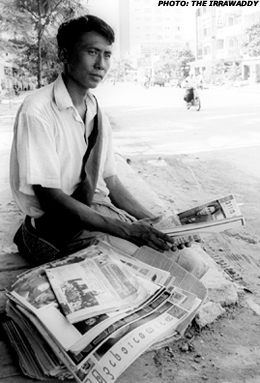Blacked Out
Reading between the lines of
Power shortages and blackouts are nothing new in
In early February, authorities detected bird flu in Sagaing and
 Why do the authorities wait so long to inform the public of such an important development that directly affects them? The reason for this particularly cynical form of censorship has to be the official fear of causing a panic. Yet fears of a serious health hazard aren’t the only reason for Burmese to stay glued to the broadcasts of shortwave radio stations beamed from overseas. The plain fact is that most Burmese have no clue what is happening in their own country.
Why do the authorities wait so long to inform the public of such an important development that directly affects them? The reason for this particularly cynical form of censorship has to be the official fear of causing a panic. Yet fears of a serious health hazard aren’t the only reason for Burmese to stay glued to the broadcasts of shortwave radio stations beamed from overseas. The plain fact is that most Burmese have no clue what is happening in their own country.
Ironically, the latest clampdown occurs as optimism surfaces in
A Rangoon-based journalist’s confidential report, seen by this correspondent, said censorship had been slightly relaxed and described 2005 as an exciting year for the media and for a new generation of journalists in
Apart from news about disasters, low-level corruption and crime, local papers are now allowed to report on such developments as moving the capital to Pyinmana and such foreign political stories as the anti-Arroyo movement in the Philippines and the efforts to bring down Thailand’s prime minister, Thaksin Shinawatra.
But in order to be able to publish these stories, guidelines have to be followed. Editors are instructed by censorship department officials that coverage must be positive and constructive. As a consequence, self-censorship is widespread in local newspaper editorial offices.
Although coverage of domestic political news, once banned, is now allowed, the censors are still very selective.
1 | 2 | 3 | 4 next page »
